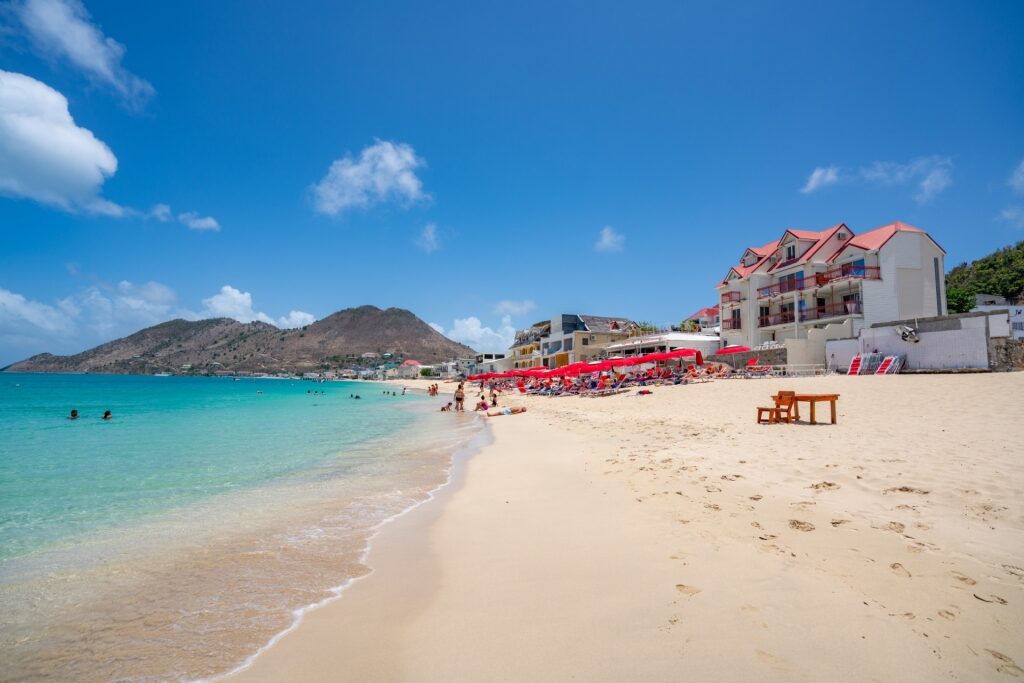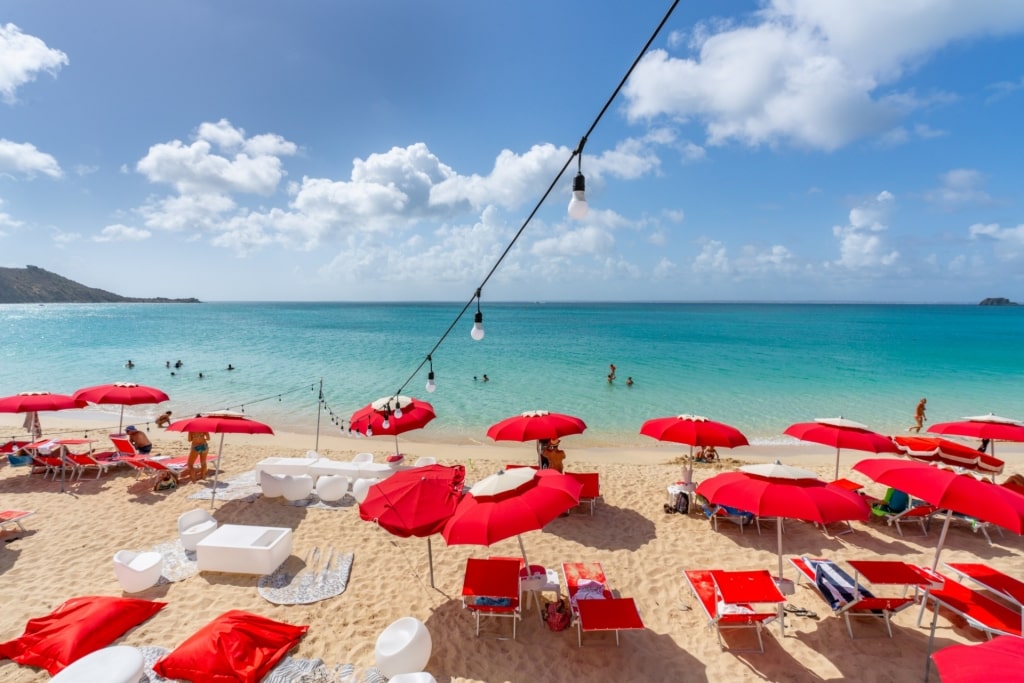The best time to visit St. Maarten is from December to April, when the weather is warm and sunny with relatively low humidity.
Lying in the Eastern Caribbean and part of the Lesser Antilles chain, the island enjoys a tropical climate. The island is a popular destination year-round, with beautiful beaches, a lively calendar of cultural events, and the added bonus that visitors can move freely between two distinctly different cultures.
Visiting St. Maarten by Season
Summer

Grand Case Beach
Summer in St. Maarten, from June to August, is a time of hot, humid weather. Temperatures average 83.9°F (28.8°C) and the amount of rainfall increases as summer progresses; August receives about 3.9 inches (100mm) of rain.
Short, sharp showers tend to fall in the afternoons, clearing the air. Occasionally, storm systems can move through, bringing more consistent rain, but it’s always warm. This is a busy time for domestic tourism but less appealing to anyone who isn’t used to intense humidity.
Fall
September, October, and November in St. Maarten tend to be hot and humid. There’s still a chance of storms passing through during this time. Expect average daily highs of 89°F (29°C), although it can feel hotter due to the increased humidity. Rainfall varies from 5.5 inches (140mm) in September to 5.9 inches (150mm) in November, the wettest month.
Rain doesn’t deter the locals from celebrating St. Maarten’s Day, November 11, marking the date when Columbus “discovered” the island. This is a time of cultural events, live music, and feasting on traditional dishes like johnny cakes, fried chicken, and salt fish.

Food in St. Maarten
Winter
December, January, and February are peak season in St. Maarten. The humidity is lower and there’s less chance of rainfall. Average daily highs are around 79°F (26°C) and rainfall is low; just 3.7 inches (95mm) in December, for example, falling to 2 inches (50mm) by February.
The island is busy with cultural events around this time. February is Carnival month on the French side of the island, with lavish parades and parties.
March brings the Heineken Regatta, one of the big events in the yachting calendar, as well as the SXM Music Festival, five days and nights of live bands and parties.
Read: Best Beaches in February
Spring
March and April are still busy months in St. Maarten, particularly around Easter and Spring Break. May is the shoulder season, as the drier months shift into hotter, more humid weather.
This is a time of celebration in St. Maarten, the Dutch side of the island, as Carnival usually falls in mid-April, which means two weeks of music, parades, dancing, and bacchanals.
Expect daily highs of 80.5°F (26.9°C) in April, increasing slowly in May. Spring is arguably the best time to go to St. Maarten; March has the lowest rainfall of any month, averaging 1.8 inches (45mm).
When Is Rainy Season?
September, October, and November are the wettest months in St. Maarten, but this doesn’t mean fall is a bad time to travel. Rain usually comes in the form of short, intense downpours and thunderstorms, and you’ll still enjoy plenty of sunshine.
When Is High Season?
High season in St. Maarten is in the cooler winter months of January, February, and March. Expect the island to be busier around this time, with the restaurants and beach bars buzzing. There are plenty of beaches in St. Maarten, though, so there’s never a sense of feeling crowded.

Grand Case Beach
When Is Shoulder Season?
May and early June, as well as mid-November until mid-December, are regarded as the shoulder season months. Some savvy travelers say the shoulder seasons are the best times to visit St. Maarten, with fewer crowds but a more relaxed atmosphere than in high season.
When Is Low Season?
Low season is during the more humid summer and fall months, from July to October. The island is quieter during this time, and some restaurants, shops, and attractions may close so the owners can take their own vacations.

St. Maarten
Are you dreaming of a cruise to St. Maarten? Browse Celebrity’s itineraries and plan your dream vacation.



